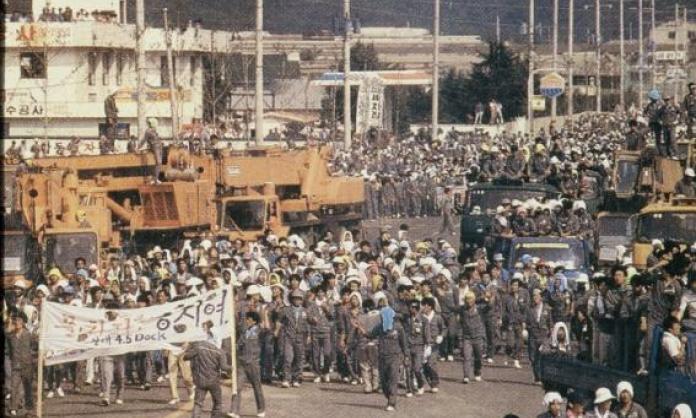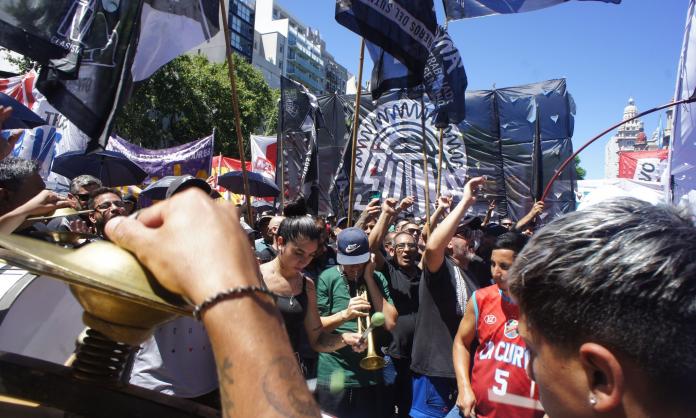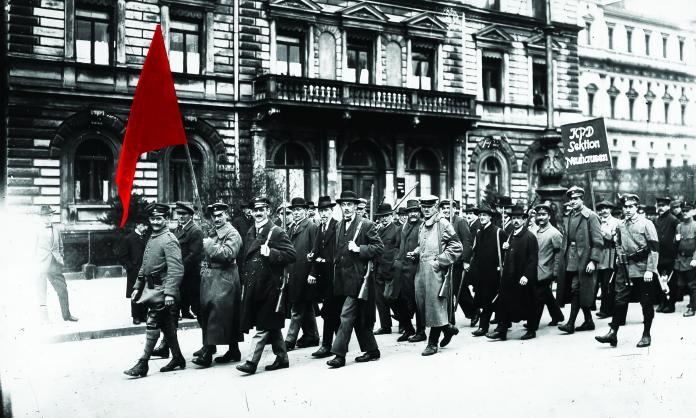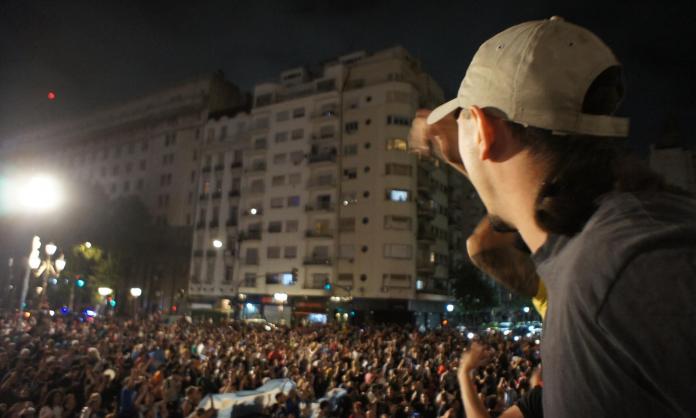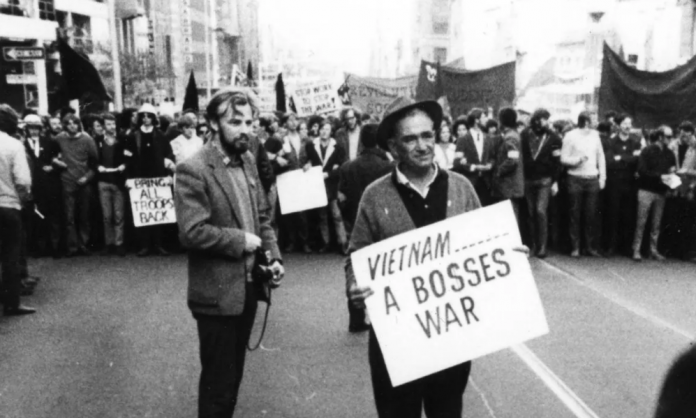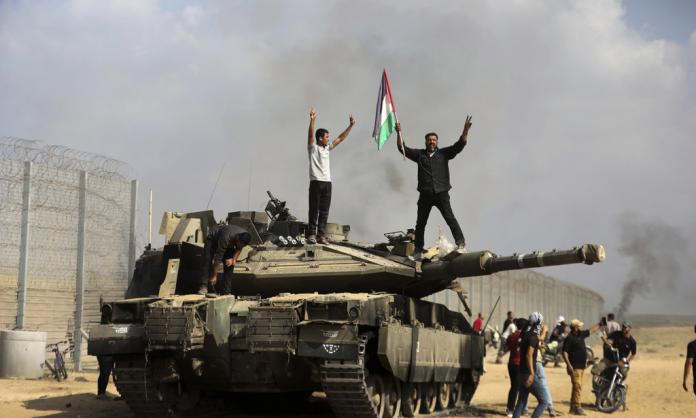South Korea’s Great Workers Struggle of 1987 was an explosive period of working-class resistance. Millions of workers joined rank-and-file strikes, which swept through the country like wildfire. The uprising was sparked by a surprise announcement on 29 June from the chairman of South Korea’s ruling Democratic Justice Party that, after decades of military rule, the country would transition to free elections.
The announcement didn’t come out of nowhere. The preceding decades had been a time not only of dictatorship, but also of tumultuous student-led resistance. In early 1987, resentment towards the dictatorship was sharpened by the death of a student activist and the sexual assault of another, both at the hands of the police. And there was the decision of Chun Doo-hwan, the leader of South Korea’s dictatorship, to cancel negotiations with the opposition party over the undemocratic nature of the elections and instead hand power to one of his old classmates from the military academy.
As student-led protests spread across the country, what really scared the regime was the participation of much wider sections of society, including many workers from a variety of industries. The June announcement was an attempt by the rulers to dampen this resistance. Little did they know that they were dampening it with petrol.
Workers had many of their own grievances. In workplaces, they suffered from low wages, long working hours and authoritarian management practices. For many factory workers, this included compulsory morning exercises and strict dress codes.
“Hyundai’s military-style disciplinary practices were quite well known, although certainly not unique in the bigger Korean manufacturing firms”, historian Hagen Koo writes in Korean Workers. “Workers were often stopped by security guards at the entrance to have their hair length measured, and if their hair was found to be longer than allowed by the company hair code, the guards used big scissors to cut their hair on the spot.”
When the announcement came that the country would transition to a democracy, many workers viewed it as an opportunity to organise and fight for dignity in the workplace.
Unlike previous periods of labour unrest, which started in Seoul and Kyungin, the Great Workers Uprising was kicked off by Hyundai factory workers in the southern city of Ulsan. Hyundai ran several companies in the region, which included ship, automobile and machinery manufacturing plants. In addition to its authoritarian workplace practices, Hyundai was known for its rabid opposition to unions. Company founder Chung Ju-young had reportedly said: “I will never allow a union until earth covers my eyes”.
Within two weeks, workers in every Hyundai firm were on strike. They joined central city demonstrations, which encouraged workers from smaller Hyundai-associated firms to join. It didn’t take long for the strike to spread to the other southern industrial regions of Pusan, Changwon and Masan. By late August, the whole country was aflame.
Three thousand workplaces went on strike over the three months from July to September, more than the combined number from the preceding two decades. While industrial workers had initiated the strike wave, workers from other industries eventually joined in too—including mining, transportation, dock and white-collar workers. As well as better wages and conditions at work, a key demand for many was the right to unionise to secure their gains into the future. Within a year, around 4,000 new unions had formed, and 700,000 workers had joined them.
The strikes were predominantly led by the rank and file and had an explosive quality reflecting the deep level of resentment, han in Korean, not only towards the bosses but also towards the company-controlled sham unions that existed in some workplaces. Some even occupied their factories, kidnapping hated managers and destroying company security offices.
Some of the most significant struggles took place in the Hyundai factories. On 8 August, representatives of newly formed unions within different Hyundai firms formed a united body, the Council of Unions of the Hyundai Group, to take on the central Hyundai management. When their demands for group-level wage negotiations and union recognition at Hyundai Heavy Industries were rejected, they decided to stand their ground and fight.
On 17 August, thousands of Hyundai workers marched from the Hyundai Heavy Industries factory towards the city.
“At the front of the march were dump trucks, forklifts, fire engines, and sand-blasting machines”, Hagen Koo recounts. “Accompanied by drums and gongs, the crowd sang newly learned songs and shouted, ‘Down with Chung Ju-young!’ On the streets they were met by the riot police. The police fired tear gas at the protesters, but soon they found themselves fleeing in panic from the angry crowd.”
The following day, the demonstration grew. Around 40,000 Hyundai workers had travelled from across Ulsan, joined by 30,000 of their wives and children. The police were forced to allow the march to go ahead, which stretched more than 3 kilometres. The announcement that Hyundai management was to accept all the workers’ demands was met with an eruption of cheers. A leading worker activist later wrote: “August 18 was the day when Hyundai workers, or all the workers of the nation, were reborn, overcoming their han, into the masters of the nation, and a great solemn march toward the future of a truly human-like life”.
The struggle took on a new character from December 1988, when president Roh Tae-woo made a “Special Announcement on Maintaining Civic Security and Law and Order”. While South Korea’s capitalist class had been willing to accept a transition to democratic elections, genuine democracy in the form of workers’ self-organisation was a step too far. For capitalism everywhere, profits are the priority whether or not opposition candidates have the right to run in parliamentary elections.
So new laws were to be introduced to enable harsher crackdowns on strikes. But the fresh wave of repression by the police only intensified the anger among the workers. In January 1989, a police attack on the offices of a number of Hyundai union leaders was met with fury from workers across Ulsan, who joined a solidarity demonstration of 30,000.
Another police attack came later that year, this time on a factory occupation of striking workers at Hyundai Heavy Industries, who had been on strike for more than 100 days. Around 15,000 riot police were mobilised to invade the compound from all sides. But when they entered, the factory was empty. The workers had snuck out, homemade weapons in hand, to the Hyundai dormitory building. When the police attacked, the workers fought back with the utmost bravery. More than 1,000 workers from nearby Hyundai factories initiated solidarity strikes, and hundreds joined as street battles with the police broke out.
The next day, the workers were joined by students and local residents. Enraged by the violence of the police, many of their wives and children also joined the fight.
“They blocked the police from entering their street alleys in pursuit of fleeing workers, they collected money and hid in their homes students who had come to assist the workers, and they collected empty bottles for manufacturing Molotov cocktails”, Hagen Koo writes.
After ten days, the street battle reached its end with the arrest of 52 union leaders and the sacking of 49 workers. Yet the high level of militancy and organisation achieved by the workers was a lasting gain.
A third significant battle took place in 1990, known as the Goliat struggle. Tensions with management were already high after workers had been barred from holding a union meeting during work hours, and from leaving work early to attend the court hearing of five union leaders arrested during the 128-day strike. They were further angered by the heavy sentences given to the arrested leaders, which came to be viewed as an attack on the whole workers’ movement.
As a strike leaflet elaborated, this was “not simply a struggle of the Hyundai Heavy Industries union but a major fight with the dictatorial regime with the trust and pride of the twenty-five million workers at stake”.
So the Goliat struggle began with a strike at Hyundai Heavy Industries, pushed by rank-and-file workers, but this time taking on a more political character than earlier strikes by targeting the anti-worker repression of the state. A number of solidarity strikes took place as workers in several industries recognised that this was their fight, too. The newly formed National Congress of Trade Unions called a general strike for 4 May, which involved 120,000 workers from 146 workplaces. Yet the sympathy strikes lasted only a few days. Once isolated, the Hyundai workers had to retreat.
Despite the incredible feats of South Korean workers during the Great Workers Struggle, the momentum wasn’t sustained. A turning point came in the mid-1990s. Sweeping changes were implemented in many workplaces, including the introduction of new human resources departments, increased automation and the subcontracted hiring of more casual and part-time workers.
While unions maintained their right to exist, new laws limited their militancy and bosses started to coopt their leaders. Union membership declined, particularly in small workplaces, and strike rates fell.
The Great Workers Struggle highlights the need for revolutionary organisation. For workers’ uprisings to go forward, to overturn the rule of the rich and the state machinery that upholds them, to replace that rule with workers’ democracy, the most militant and radical workers need to win over the rest of the class to the need to join the movement and, ultimately, to take over the running of society.
Small scale versions of this sort of leadership could be seen in a few of the Hyundai workplaces. At Hyundai Engines, where the first union was formed in 1987, small groups of workers had been cultivating a sense of solidarity and arguing for the need to unionise for many years before the struggle erupted.
One of these groups was a study circle organised by Kwon Yong-mok, who had studied Marxism through his contacts with dissident intellectuals. Hagen Koo writes:
“Gradually, the group’s attention was turned to discussing the problems in their workplace and studying labour laws and Marxist literature. In 1986, Kwon and his colleagues succeeded in taking control of the labour management council and transforming it from a pro-management agency to a more worker-representative organisation ... Similar small group activities had been going on in other Hyundai firms in Ulsan, including Hyundai Motors, Hyundai Heavy Electrics, and Hyundai Heavy Industries.”
If radical workers and students had been organised across the country before the uprising, perhaps the incredible levels of militancy, solidarity and confidence seen at the Hyundai factories could have been carried into more industries and across all other sectors of society. For the movement to win lasting equality and democracy, more workers needed to be drawn into the struggle and into their own organisations, which could ultimately overthrow the repressive state.
Despite the movement winding down, the Great Workers Struggle was an incredible display of the capacity of workers to organise and to fight. In the words of Lee Soo-won, a historian of the Hyundai workers’ struggles:
“The twenty years at Hyundai Motors! In the sea of labourers that had ever been so calm, a huge mountain-like wave erupted suddenly. A solemn scene was staged in which the workers, who had been no more than mere parts in the continuously running conveyor belt, refused to be machines and proclaimed that they were human.”




